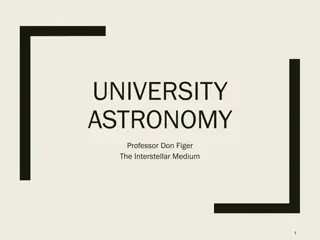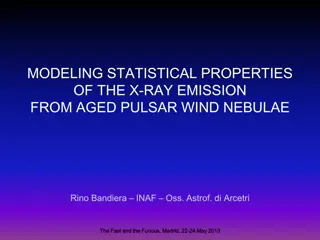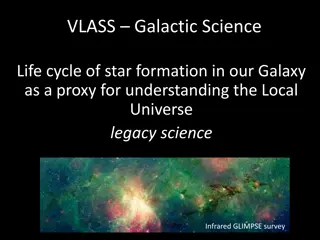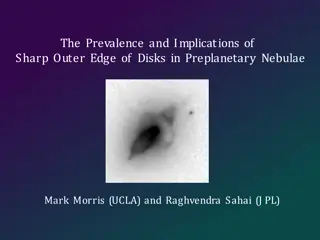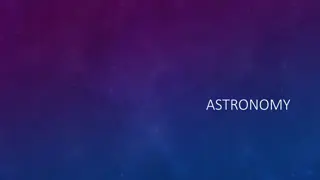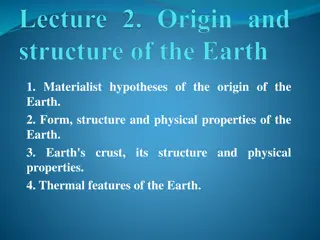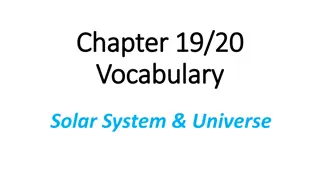Understanding Nebulae: From Kant's Proposal to Hubble's Discoveries
In 1755, Kant proposed that nebulae are island universes, sparking a debate on their nature within or outside our galaxy. Shapley and Curtis debated whether spiral nebulae were rotating systems like our Milky Way. Hubble's observations of the Andromeda Nebula led to the realization that it is a gala
10 views • 166 slides
Exploring the Interstellar Medium in Astronomy
Delve into the vast expanse of the Interstellar Medium (ISM), the space between stars filled with gas, dust, and nebulae. Understand the components of the ISM, including emission and reflection nebulae, and learn about the intriguing phenomena that shape our view of the cosmos.
0 views • 42 slides
Statistical Properties of X-ray Emission from Aged Pulsar Wind Nebulae
Exploring the statistical trends and evolution of X-ray emission from aged pulsar wind nebulae, including correlations with pulsar characteristics and unexpected expansion findings. Proposed explanations shed light on the intriguing behaviors observed in these cosmic phenomena.
2 views • 18 slides
Exploring Star Formation and Stellar Phenomena in Our Galaxy
Delve into the fascinating realms of high mass star formation, stellar winds, planetary nebulae, and active stars through the VLASS Galactic Science project. This initiative leverages cutting-edge surveys like GLIMPSE and CORNISH to unlock the secrets of star birth, evolution, and their impact on th
0 views • 8 slides
The Prevalence and Implications of Sharp Outer Edge of Disks in Preplanetary Nebulae
Recognizable preplanetary nebulae typically exhibit bipolar structures with an opaque disk that contains a density discontinuity at a certain radius. These disks, when appropriately tilted, can block light from the rear lobe of the nebula, leading to the observation of a sharp outer boundary. Studie
0 views • 17 slides
Exploring Nebulae: Gas Clouds of the Universe
Nebulae are diverse interstellar clouds of gas and dust, ranging in size and composition. They play key roles in star formation and can vary in characteristics based on their origin. Reflection nebulae, for example, reflect light from nearby stars and are often associated with ongoing star formation
0 views • 5 slides
Hypotheses on the Origin of Earth and Earth's Formation
Various materialist hypotheses proposed by scientists such as Kant, Laplace, Schmidt, and Fesenkov regarding the origin of Earth and the solar system. These hypotheses suggest different processes, including the formation from primary dusty matter, hot nebula, interstellar meteorite dust, and gas-dus
0 views • 16 slides
Exploring the Solar System and Universe: Vocabulary Overview
Explore key terms related to the Solar System and Universe, including concepts such as accretion, asteroids, the Big Bang Theory, black holes, clusters, comets, galaxies, light-years, nebulae, the Nebular Model, planets, and red giants. Enhance your understanding of these phenomena and their signifi
0 views • 19 slides
Unveiling Dark Nebulae and Stellar Formation in Space
Dark Nebulae like the Coalsack Nebula and Snake Nebula are dense interstellar clouds where light cannot pass through. Comprised of tiny dust particles coated in frozen gases, they serve as precursors to stellar nurseries, where protostars begin to form and evolve. Learn about these enigmatic cosmic
0 views • 11 slides

